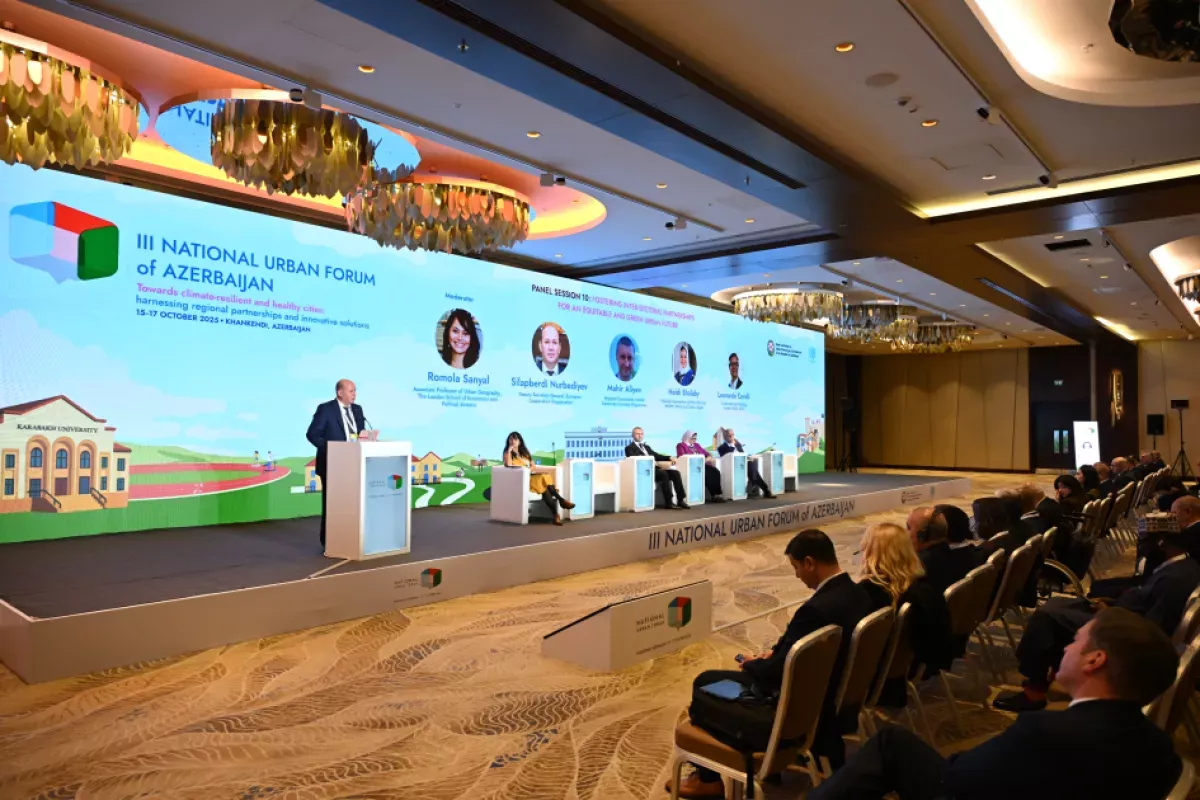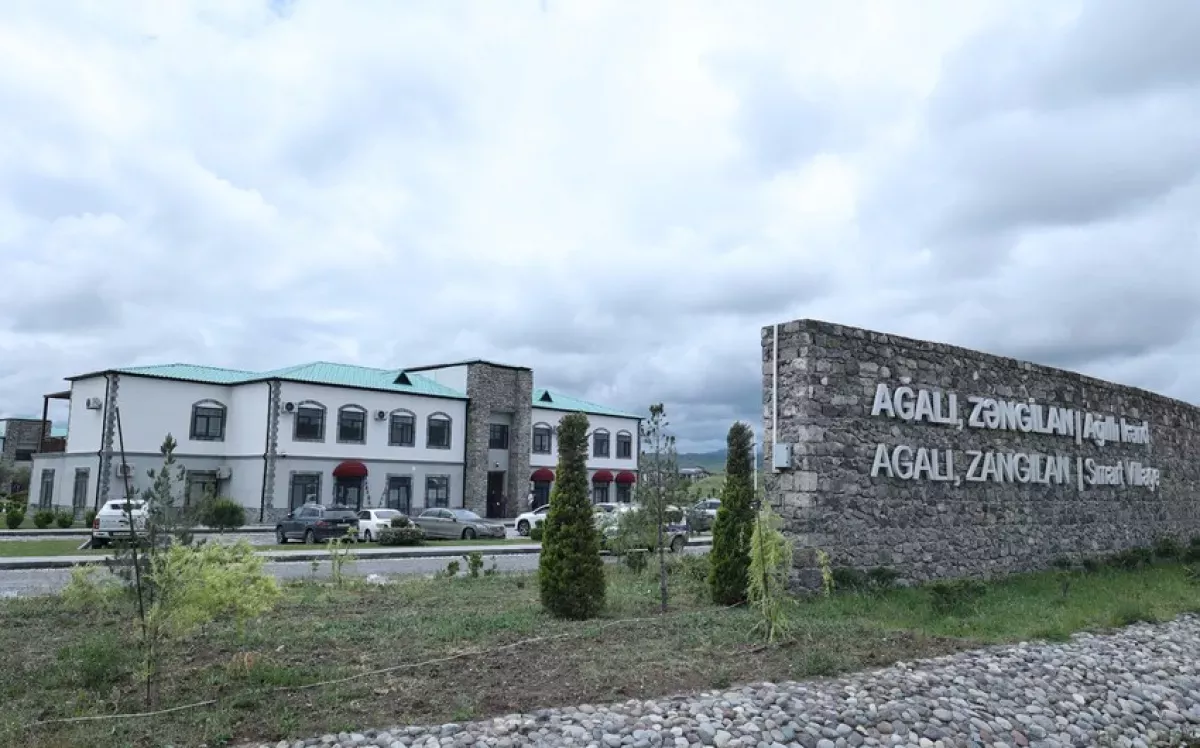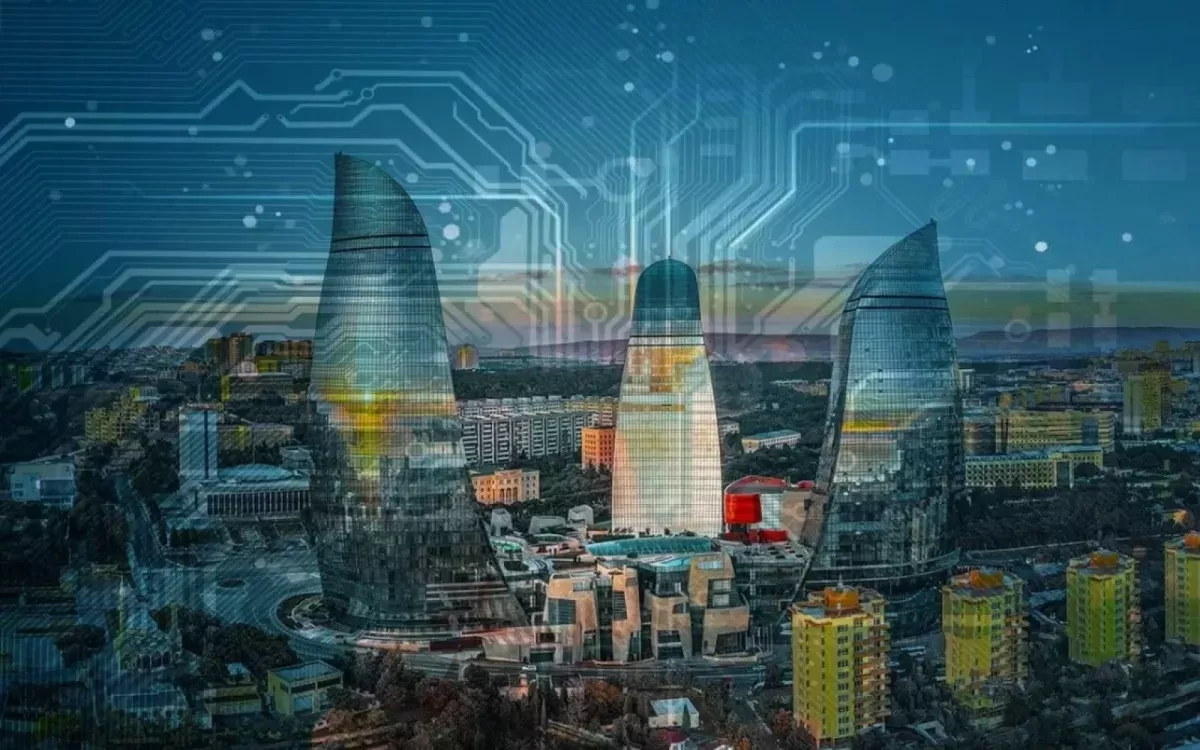The future is already being built: Azerbaijan and the formula for sustainable urbanism Exploring NUFA3 outcomes
The UN estimates that 68% of the world’s population — around 6.4 billion people — will live in cities by 2050. Today, many of the world’s megacities are overcrowded and face ecological challenges, including shortages of clean water, traffic congestion, and more. Humanity now faces the urgent task of optimising urbanisation processes, including the development of energy-efficient cities using modern “green” urban planning solutions, digitalising municipal management, and implementing elements of the “smart city” concept.
From October 15 to 17, these and other issues were discussed in Khankendi, followed by sessions in Baku, during the panel discussions of the 3rd National Urban Forum (NUFA3).
NUFA3 events, organised within the framework of the partnership between the State Committee for Urban Development and Architecture of Azerbaijan and the United Nations Human Settlements Programme (UN-Habitat), were held this year under the motto “Climate-Resilient and Healthy Cities: Regional Partnerships and Innovative Solutions.” The forum was attended by about 400 delegates from more than 60 countries representing government and private sector organisations, as well as international organisations, scientific institutions, civil society, and the media.

“This event, held in Azerbaijan for the third time and already a growing tradition, brings together national, regional, and international partners in urban planning and serves as a vital platform for exchanging experiences, fostering new initiatives, and enhancing cooperation,” Azerbaijani President Ilham Aliyev said in his address to the participants of the III National Urban Forum. “The National Urban Forums, organized in cooperation with UN-Habitat, are another vivid manifestation of Azerbaijan’s successful collaboration with international partners in this field.”
“Urban planning is a priority area in Azerbaijan’s national development strategy,” the head of state noted, emphasizing that the country’s approaches to urban planning and urbanization, as well as the large-scale construction and restoration projects underway in the Karabakh and East Zangazur economic regions, demonstrate Azerbaijan’s strategic vision and its capacity to implement its planned initiatives in the field of urban development.
In particular, President Ilham Aliyev noted that the reconstruction of settlements in the Karabakh region has been carried out using modern urban planning principles and the creation of sustainable infrastructure. “Over the past four years, three new international airports have been built, along with modern roads and highways, new railway infrastructure, and ongoing construction of residential buildings, healthcare facilities, educational institutions, and other social infrastructure,” President Aliyev noted. “In Garabagh and East Zangazur, designated as a ‘green energy’ zone, with a capacity of up to 10,000 megawatts. Innovative approaches such as ‘smart city’ and ‘smart village’ are being applied, and ecosystem restoration is in progress. Today, about 60,000 people live, work and study in these areas under the ‘Great Return’ program,” he said.
One of the key objectives of the forum was to showcase the achievements in the reconstruction of Karabakh and East Zangazur and their alignment with UN-Habitat’s priorities in sustainable development, the implementation of advanced technologies in architectural design, and urban management. The reconstruction of Azerbaijan’s territories liberated from occupation now serves as an experimental platform where new approaches are being tested — including digital planning, energy-efficient construction, the deployment of renewable energy sources (RES), and the integration of natural landscapes into urban spaces.
At the NUFA3 plenary sessions, examples of developing “smart” settlements were discussed. These included projects in the villages of Agaly in the Zangilan District, Dovlatiarly in the Fuzuli District, and the city of Khojaly, where Smart City and Smart Village concepts are being implemented. In these settlements — and more broadly across urban development processes in Karabakh — elements of digitalization in municipal services and waste management are being introduced on a large scale for the first time in the post-Soviet space, along with the use of RES generation.
These projects also involve the application of smart technologies in fire safety and disaster warning systems, the creation of integrated urban transport management centers with “smart” parking, bus stops, and more. In housing construction, eco-friendly materials are widely used, and IoT technologies for smart homes are being implemented.

Addressing the NUFA3 sessions, Deen Sharp, a research fellow in human geography and environment at the London School of Economics and Political Science, said a decisive factor in the success of “smart” settlements in Azerbaijan has been the active participation of citizens in their development. Both in Baku and in the reconstructed regions, the key objective remains the same — creating people-centred cities.
According to the British expert, the concept of smart cities is built on three fundamental principles: Smart Cities must be integrated into local realities, they must be accessible and understandable to residents, and, most importantly, they must be focused on people.
“In Karabakh and East Zangazur, not only are destroyed cities being rebuilt, but a sustainable and intelligent living environment is being created from scratch: residents will be able to reach hospitals, schools, kindergartens, and service points within 15 minutes — the ‘15-minute city’ model, which promotes an ecological and efficient lifestyle,” said Vahid Hajiyev, a NUFA3 forum participant and Special Representative of the President for the Gubadli, Jabrayil, and Zangilan districts.
“The master plans for all cities and settlements are being developed based on modern urban planning principles: construction follows main thoroughfares and transit lines, which facilitates residents’ access to workplaces, logistics centres, and industrial zones, while also stimulating local entrepreneurship.”
The experience gained in Karabakh and East Zangazur is gradually becoming a foundation for implementing similar approaches across the country, shaping a unified urban vision — the concept of the “New Azerbaijani City.” Overall, Azerbaijan’s modern urban policy relies on a combination of technological progress and the preservation of cultural continuity, with particular attention to maintaining the historical character of cities and architectural heritage.
Key priorities of the new urban planning concept include creating accessible public spaces, safe transportation environments, environmentally friendly recreation areas, and educational centers. This is evidenced by the reconstruction of cities such as Baku, Sumgait, Ganja, Sheki, Lankaran, and Nakhchivan, which are becoming integral parts of the country’s modern urban development strategy.
Within the framework of the Smart City program in Baku, digital management systems are being implemented as part of the City Digital Twins project: a virtual model of the urban space, its communications, and other systems, reflecting real-time changes and enabling efficient management of city infrastructure.

In the country’s major cities, energy efficiency principles are gradually being implemented in the construction and renovation of residential, public, administrative, and commercial buildings. For example, under the new national strategy, the European Bank for Reconstruction and Development (EBRD) provided Azerbaijan with a €10 million loan for a project to improve street lighting in Ganja, the country’s second-largest city. The project involves the introduction of energy-efficient lighting, automated management and monitoring systems, and the replacement of poles and power cables, which will result in significant energy savings, reduced maintenance costs, and improved safety for road users.
These initiatives are being carried out within the framework of the European Union’s Green Cities Action Plan (GCAP), and it is expected that components of the program will gradually be introduced in other cities across the country.
It is worth recalling that as early as July 2021, Azerbaijan adopted the law “On the Rational Use of Energy Resources and Energy Efficiency.” In January of last year, the Ministry of Energy decided to accelerate the appointment of energy managers responsible for the efficient use of energy in large enterprises. In the future, mechanisms for energy audits and standardized energy certification of buildings are expected to be developed.
More recently, drawing on European experience, the State Committee for Urban Planning and Architecture of Azerbaijan introduced energy efficiency categories A, B, C, D, and E. In particular, the operation of buildings below category C is now prohibited in Azerbaijan, and construction of low-category buildings will also not be allowed in the Karabakh region. Subsequent steps will focus on encouraging businesses to improve building energy efficiency, implement efficient lighting, heating, and air-conditioning systems, enhance thermal insulation, and so on.








